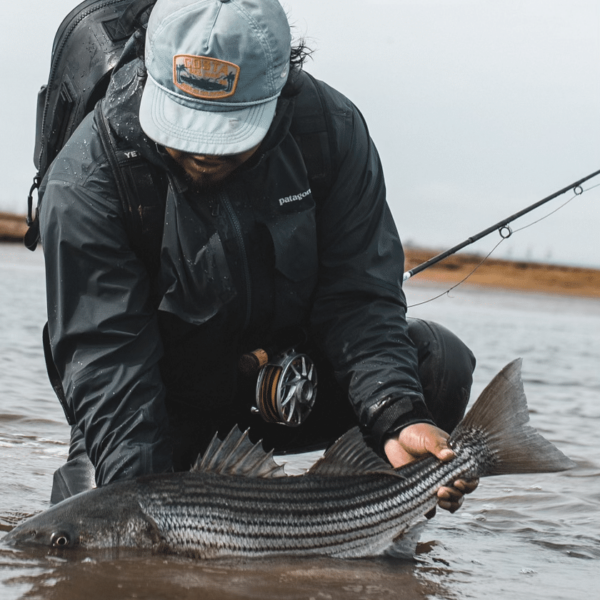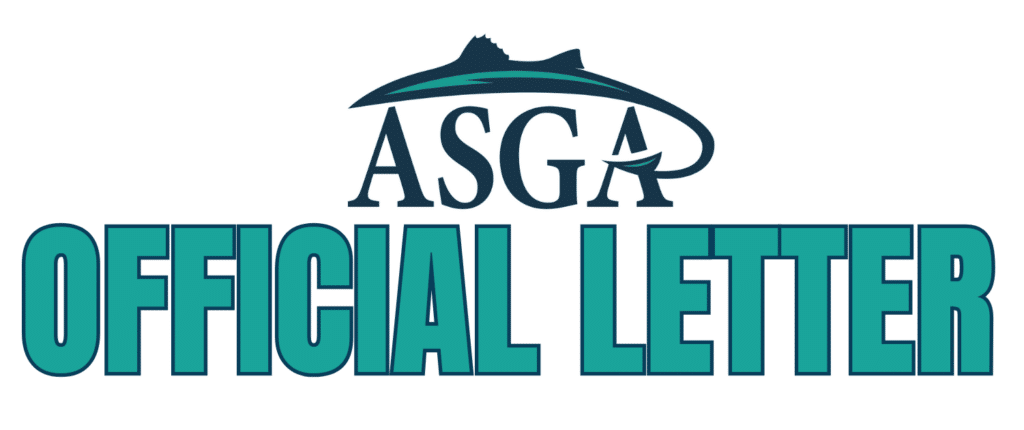Striper Action Alert
ACTION ALERT!
SPEAK UP FOR OUR FISHERY & BUSINESSES
Facing Spawn Failures & Poor Management:
JOIN ASGA IN CALLING FOR MANAGERS TO PROTECT CRITICAL YEAR CLASSES
The ASMFC Striped Bass Management Board must take action to fulfill their obligation to rebuild our striped bass fishery. We believe the Board needs to prioritize the long-term health of this shared resource and equitable contributions to conservation by all sectors. Reductions should balance impacts across jurisdictions. Law enforcement has deemed no-targeting closures unenforceable. Despite the fact that they are a large portion of the proposed management options, ASGA remains adamant that no-targeting should not be considered.
“No action” is no longer an option.
ASGA submitted a full scope of management requests in an Official Letter at the Fall meeting. The Board voted to reconvene in December to consider new actions for 2025. Now that new management options have been proposed, the following letter represents our management goals for the meeting on December 16, 2024.


THE PROPOSED CLOSURES ARE INEQUITABLE
THESE OPTIONS DISPROPORTIONALLY EFFECT ANGLERS & GUIDES IN DIFFERENT STATES
OUR OUTLOOK FOR STRIPED BASS:
There is an enormous amount of uncertainty in projecting fishing mortality. This resulted in three different scenarios of no reduction, 8% reduction, and a 14% reduction that the Technical Community found reasonable. The document states that: “The TC-SAS highlighted several major sources of uncertainty in the projections including the realized 2024 removals, the magnitude of the increase in F in 2025 that is expected to occur, and the F rate that the population will experience from 2026-2029.”
NO TARGETING CLOSURES
- The assumption that Maryland exceeded its conservation goals through no-targeting closures is fundamentally flawed. When closures were first implemented in 2018, fishing effort remained static. By 2020, expanded closures paradoxically led to increased effort. Maryland’s goals were met because fewer fish were available to be caught. This was a direct result of declining abundance. As the stock in the Chesapeake Bay collapses, both effort and total catch per directed trip have declined. See Figure 1.
- Relying on a false assumption to build new measures is not a sound strategy for managing the most economically important fishery on the East Coast. The Law Enforcement Committee (LEC) has consistently stated that no-targeting closures are virtually unenforceable, rating them the least enforceable of 27 management guidelines with a score of 1.87 out of 5.
- No-targeting closures disproportionately affect regions with shorter fishing seasons. Guides and fishing businesses in these areas will face devastating economic impacts, with some businesses at risk of closure altogether.
TELL THE STRIPED BASS BOARD THAT WE
DON'T SUPPORT NO TARGETING
CLOSURES
Claiming that Maryland exceeded conservation because of no-targeting closures is flawed. Effort actually spiked after the expansion of these closures (Figure 1). Effort and Catch Per Unit Effort have fallen off a cliff because of a lack of fish.


NO HARVEST CLOSURES
- While ASGA has traditionally supported no-harvest closures over no-targeting closures, the recently proposed no-harvest closures lack equity among states. States like Maine, New Hampshire, and Massachusetts have much shorter fishing seasons compared to southern states. A 50-day no-harvest period in Maine imposes a far greater burden than the same closure in New Jersey.
- Additionally, states with longer seasons can cherry-pick closure periods that minimize their impact, further exacerbating inequities. States with higher harvest rates and more access to the fishery should shoulder a proportionately greater share of reductions.
DROP THE SLOT
- The Technical Committee (TC) has been tasked with exploring a smaller slot limit to protect the 2018-year class. ASGA views this as the only viable path forward. Historical data underscores the risks of maintaining the status quo. When the 2015-year class entered the slot, harvest levels increased by a million fish. A similar surge cannot be allowed to occur with the 2018-year class. Moving the slow lower will further protect both critical remaining year-classes.
- Projections using 2018 as a baseline fail to reflect the current reality. The robust 2015-year class is no longer available, and the time series does not account for this significant shift. While the spike in 2011 spawning production may resemble that of 2018, though still half the total production, the next 6 years of spawning production are non-existent after 2018. Using 2011-2018 time series as a proxy for juvenile abundance neglects the last 6 years of abysmal spawns and our crippling lack of juvenile fish.
See Figure 2.
THESE GRAPHS ARE NOT EQUIVALENT!
- We can not support the concept that there will be as many young fish to start 2025 as there were in 2018. The Chesapeake Bay Juvenile Abundance Index (JAI) represents the vast majority of spawning production for the coastwide stock. This JAI has set record lows the last 6 years. The first time series on this graphic is being used as a proxy for the latter, yet the spawning production in ’18-’24 is 33% of the previous time series.
- The deadline to sign our Official Letter is 8pm on Tuesday, December 10th, 2024.







